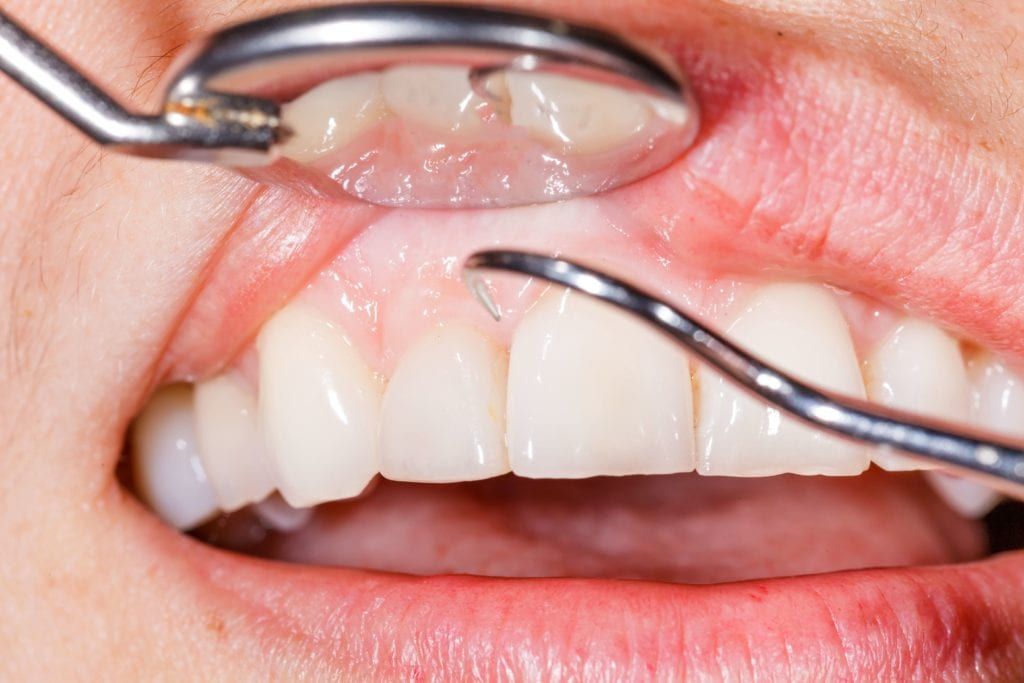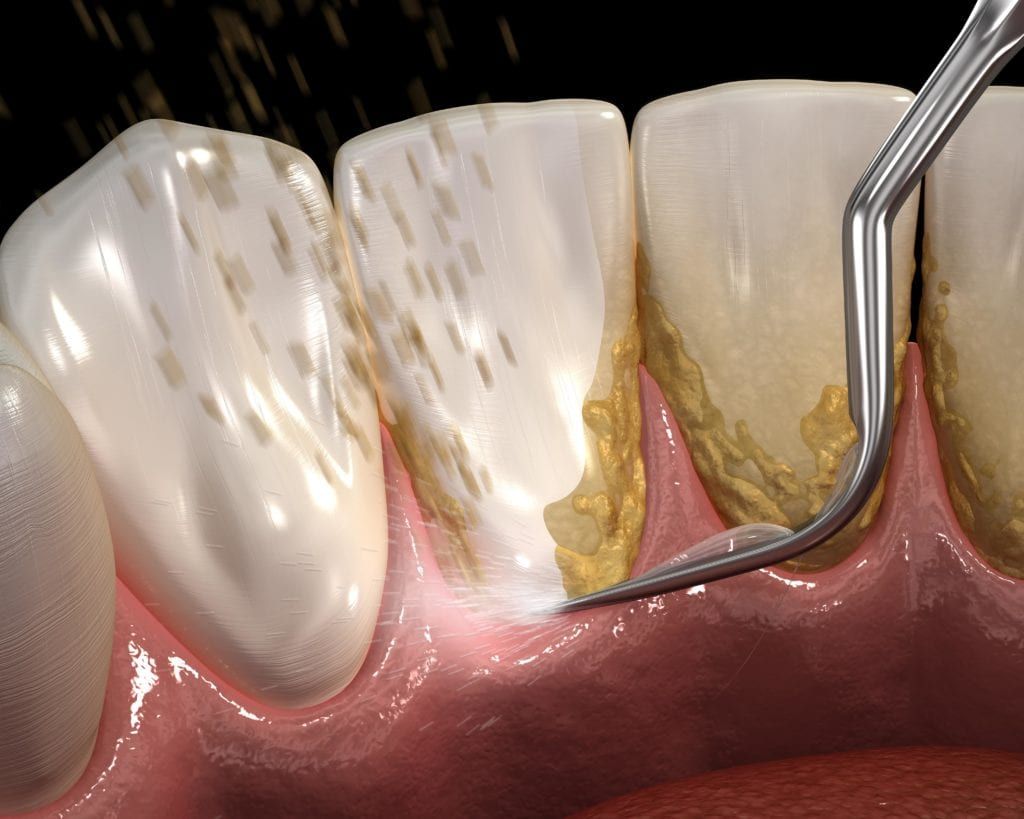Periodontal cleanings, or deep cleanings, are a type of dental cleaning that is used to treat gum disease. Gum disease can occur as a result of plaque and tartar accumulation along the gum line. The bacteria in plaque and tartar ultimately cause the gum tissue to become inflamed, resulting in an infection that causes the gums to pull away from the tooth. Therefore, periodontal cleanings are used to remove excess plaque and tartar from along the gum line and within the gum pockets.
A periodontal cleaning is often referred to as Scaling and Root Planing since it involves the tooth roots. Scaling is the term used to describe the removal of plaque and tartar from the entire surface of the tooth and the roots. Root planing describes the process of smoothing out the tooth roots to encourage the gums to reattach themselves to the roots.
Did You Know?
There are two types of gum disease. Gingivitis is the name for early gum disease that can be reversed with regular periodontal cleanings and good oral hygiene. Periodontitis is the name for advanced gum disease that can be managed with regular periodontal cleanings and good oral hygiene. Although periodontitis cannot be reversed, managing the condition prevents it from getting worse.
Frequently Asked Questions:
Do I need a periodontal cleaning?
You will need a periodontal cleaning if Dr. Martin identifies symptoms of gum disease or if you are predisposed to the condition. Some possible symptoms of gum disease include:

- Red or swollen gums
- Gums that are tender to the touch
- Gum recession/teeth look larger than usual
- Gums that bleed easily while brushing or flossing
It is important to note that gum disease does not always cause symptoms, especially in the early stages. In most cases, gum disease is often diagnosed by Dr. Martin during a regular dental exam. Therefore, it is important to keep up with your routine exams to prevent possible gum disease from progressing.
What happens during a periodontal cleaning?

A periodontal cleaning will likely feel the same to you as a traditional teeth cleaning, however you may feel some soreness if your gums are tender to the touch. Dental anesthetics are not always needed for a periodontal cleaning, however they can be used if you are uncomfortable.
Just like with a traditional teeth cleaning, plaque and tartar will be removed from the entire front and back surface of your teeth using a dental tool called a scaler. This scaler will also be used to remove plaque and tartar deposits from your gum pockets along the gum line. This may cause some bleeding, depending on how inflammed the gums are. Next, Dr. Martin will use the scaler tool to smoothen out the surface of the tooth roots. A smooth and clean root surface helps the gums to reattach themselves to the teeth. In some cases, Dr. Martin may also prescribe certain medications to help the gums heal faster.
What happens after my periodontal cleaning?
Depending on how severe your case of gum disease is, Dr. Martin may only complete one quadrant of your mouth at a time. In these cases, you will need to schedule another appointment to continue the process. If a complete cleaning was performed, then Dr. Martin will likely have you schedule either a follow up appointment or another cleaning in about 3-4 months because periodontal cleanings are required more frequently than regular cleanings.
In the meantime, it is important that you continue to practice good oral hygiene in between periodontal cleanings. This means brushing twice a day and flossing daily. Additionally, be sure to take any prescribed medications as directed.
